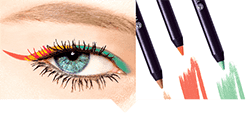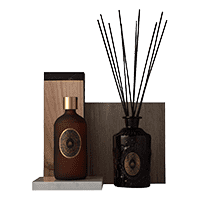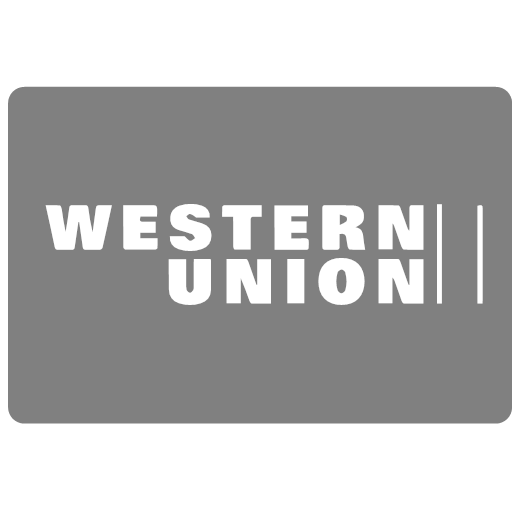 Your shopping cart is empty!
Your shopping cart is empty! Thai massage - history from origins to the present day
Jivaku Kumara Bhashi is also known as Shiuago Komparge. Many believe that it was Jivaku Kumara Bhashi who stood at the origins of Thai medicine.
It is believed that the teachings of Kumar Bhasha reached the territory of modern Thailand at approximately the same time as Buddhism, that is, in the 2nd or 3rd century AD. It is not known whether any types of massage existed in Thailand before this time.
Likewise, it is impossible to say to what extent Chinese traditional medicine, particularly acupuncture and acupressure, have influenced the theory and practice of massage in Thailand.
Researchers have proven that the ancestors of the Thais widely inhabited the southern provinces of China and especially the provinces of Guangdong and Guangxi around 250 BC. Subsequently, having divided into several ethnic groups, the Thais began migrating south.
Some groups settled in northern Vietnam, Laos and Burma, while others reached what is now Thailand, where they formed the first Thai state of Sukhothai, the first manuscript of which was written by King Ramkhamhaeng in 1283 AD.

Thai massage or monastic practice?
There is an opinion that the Thai healing system of healing borrowed its principles from Ayurveda. Since many Ayurvedic tenets are often found in Thai herbalists. However, most scholars tend to believe that these are later additions and not the basis of the Thai system.
Now it is no longer possible to obtain accurate information about the true origins of Thai massage, largely because for centuries the transfer of medical knowledge from teachers to students, in accordance with accepted tradition, occurred mainly by word of mouth and was not recorded in writing.
Thai massage was mainly the domain of monastic practices in Buddhist monasteries, from where it subsequently received its wider distribution. We can definitely say that over time, the medical knowledge of different cultures complemented each other, which served as the basis for the teaching of modern Thai massage.
Thai massage is a privilege of the royal family
The first records of Thai massage are usually dated back to the Ayutthaya period, more specifically during the reign of King Barommatrikolokkanat in 1455 AD, the records state that Thai massage was actively used to treat ailments of the royal family.
Another mention of Thai massage dates back to the reign of King Narai the Great. In his memoirs of 1687-1688, the French ambassador La Loubar says that “In the kingdom of Siam, when people feel unwell, they seek help from a special person who has experience in Thai massage, who stretches the body and walks with his feet on the patient. The same technique is used to prepare pregnant women for childbirth.” Based on these sources, it can be assumed that Thai massage was widespread among the Thais long before the reign of King Narai the Great.
Thai massage is also mentioned in the 17th century medical treatise Pali Kanon, an old text of Southern Theravada Buddhism (found today mainly in Sri Lanka, Burma, Mynham, Laos, Kampuchea and Thailand). The treatise is written in palm leaves, Pali language, using Khmer script.
There are many references to Thai massage in the Buddhist texts of the Pali Canon.
Rama I is the king who made Thai massage the property of the people
The most famous historical evidence of Thai massage dates back to the Chakri dynasty - a period when the situation in the country stabilized and the ruling monarchs supported and promoted the development of traditional Thai medicine. King Buddha Yodfa Chulalok, known as King Rama I (1782-1809), promoted the idea of improving the health of Thais, including ordinary citizens, and promoted the preservation of accumulated knowledge and the development of medical practice.

Thai medical practice
For example, the king rebuilt Wat Photaram, an old temple in Bangkok (now known as Wat Pho), creating a repository of medical knowledge based on salvaged records and documents from Ayutthaya, which was destroyed during the Burmese invasion in 1767-1768. The first medical texts carved on the walls of the temple date back to the period of his reign.
The next king, Buddha Lertla Naphalai or King Rama II (1809-1824), directed his efforts to restore the medical knowledge and methods of treatment lost in Ayutthaya during the war with the Burmese. Thus, during his reign, active restoration work was carried out on temples, for example, the Wat Chom Tong temple located in the vicinity of Bangkok, now Wat Ratchaorot. Records of Thai medicine, including herbal treatments, were restored and carved on the walls of temples.
Records of healing immortalized on the walls of the temple.
King Nangklao, or Rama III (1824-1851), continued the work begun by King Rama I to restore Wat Pho, making the records more durable by carving them on marble tablets. In 1832, the king ordered the creation of a university on the basis of the monastery.
Wat Pho is the first university to be opened in Thailand. Masters and scholars of various academic disciplines were gathered at the first center to teach the methods of Thai traditional medicine. Most knowledge at that time was not written down, but was passed on from memory by word of mouth from teachers to students.
Statues in various yoga poses called "Luesri Dadton" in Thailand were cast from tin. 80 statues showing yogis in various poses with descriptions of their proper use and their effects were created during this period. Some of the statues, unfortunately, were damaged over time, and some were lost, but 24 of them were restored and are now in the vaults of Wat Pho. Earlier in 1906, the poses of 40 statues were painted on the walls of Wat Matchimawad (Wat Klang), a Songkhla temple in the southern province of Thailand.
Yoga and Thai massage have a lot in common

King Mongkut, or King Rama IV, (1851-1868), oversaw the integration of the Thai health care system with Eastern medicine and allowed Eastern healers to practice in Thailand. Records from this period are preserved in the royal palace.
The reign of Rama V and the rise of Thai massage culture
King Chulalongkorn, known as Rama V (1868-1910), promoted the development of Thai massage and kept Thai massage specialists at his court, taking them with him on trips around the country, studying the life and everyday life of ordinary citizens. In 1870, the king established a royal academy to collect all extant data related to Thai medicine, massage and yoga.
All collected texts were used in the medical school established by the king. Later, the well-known medical school professor Phraya Pitsanu Prasartved made them public in order to develop the practice of self-medication, he received permission from Prince Dumrong Rachanupap, head of the national library, compiling all the texts into a book, which was completed by 1907.
Rama V kept massage therapists at the palace and even took them with him on trips
During the reign of King Rama V, Thailand changed and modernized in accordance with Western trends. The first Western hospital was built in 1888 and was named Siriraj Hospital. During this period, Traditional Thai Medicine was used along with Western Medicine, but priority was given to Thai Traditional Medicine.
The Thais respected the king for making the knowledge about Thai medicine, collected over centuries, available to the people, calling him the second father of Thai massage and putting him on a par with the founder Dr. Jiwaka Komaraphat.
The subsequent ruler, King Vajiravudh or King Rama VI (1910-1925), believed in the Western system of treatment, so the Royal Traditional Medicine Department was dissolved and the practice of teaching Thai traditional medicine was discontinued. The king issued a decree requiring professional licensing. Thai massage was also included in this list during the reign of the king. Later, Thai massage was excluded from this list, but was not completely restored to its rights.

Why is Thai massage often associated with sex services?
During the Vietnam War from 1957 to 1964, the reputation and image of real Thai massage was practically destroyed. Thai massage became directly associated with sexual services, as Thailand became a holiday destination for American soldiers.
In 1962, the Northern School of Thai Massage was founded.
In 1977, the World Health Organization (WHO) organized an international conference on traditional medicine. In subsequent years, the WHO convinced participating countries to introduce traditional methods of treatment used for centuries in their countries into the modern health care system. From this point on, the Thai government began to support Traditional Thai Medicine as a national policy.
The present and future of Thai massage
The possibility of using traditional healing methods along with the use of Thai massage gradually began to gain importance in the eyes of the Thai public. However, the modernization of the healthcare system and the formation of the legislative framework do not contribute to the development of Thai traditional medicine, while Thai massage has received a new round of development, even despite all the changes that have occurred. For example, training standards were improved and a specialist certification system was introduced. Since 2004, the government has required all Thai massage therapists to have special permits to carry out their activities.
In order to avoid the consequences of unprofessional use of Thai massage, as well as in order to increase the professionalism of the masters and improve the quality of the training system, the Thai government took an unprecedented step in 1985 - a project called “Revival of Thai massage”.
As part of the program, 12 organizations directly related to Thai traditional medicine, the best practitioners, gathered to discuss the future of Thai massage, exchange experiences and develop common standards and steps aimed at the development of Thai massage. This project resulted in a fruitful collaboration that united the best minds of Thailand for 3 years from 1985 to 1987, which laid the foundation for a new stage in the development of Thai massage.
THAI BALMS FOR MASSAGE IN OUR STORE







